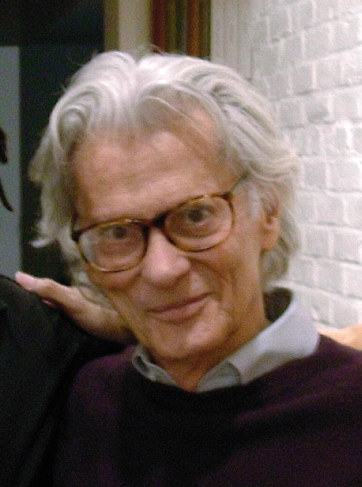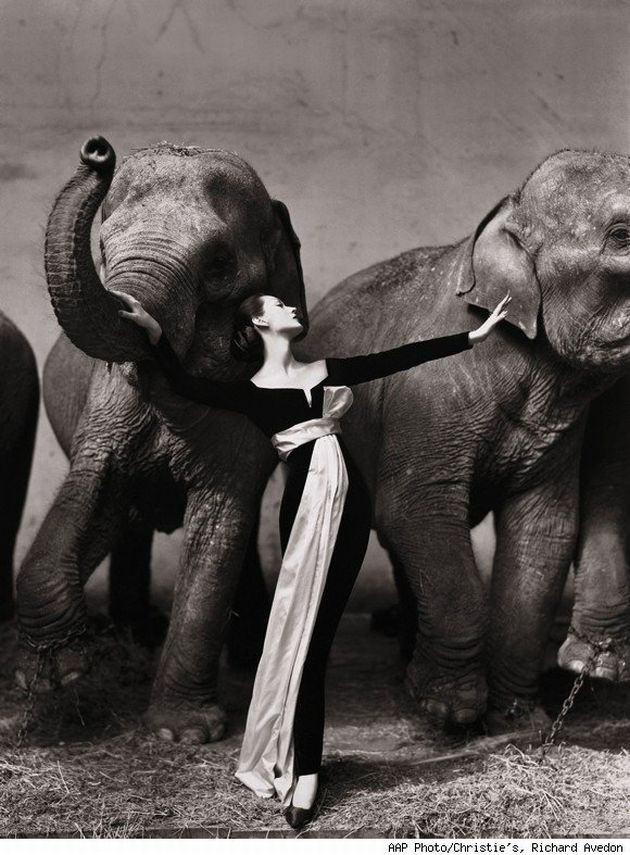
Richard Avedon was born in New York USA on May 15, 1923 –After suffering a brain hemorrhage while on assignment in San Antonio, at the age of 81, he died in October 2004. Before his sudden brain hemorrhage, Richard Avedon was in Texas for The New Yorker, taking pictures for a piece called “On Democracy.” He spent months on the project, shooting politicians, delegates and citizens from around the country
Sourced – legacy.com – Internet 26th February 2017
The New York Times said that “his fashion and portrait photographs helped define America’s image of style, beauty and culture for the last half-century”.
In 1944, Avedon began working as an advertising photographer for a department store, but was quickly endorsed by Alexey Brodovitch, who was art director for the fashion magazine Harper’s Bazaar. Lillian Bassman also promoted Avedon’s career at Harper’s. In 1945 his photographs began appearing in Junior Bazaar and, a year later, in Harper’s Bazaar.
In 1946, Avedon had set up his own studio and began providing images for magazines including Vogue and Life. He soon became the chief photographer for Harper’s Bazaar. From 1950 he also contributed photographs to Life, Look and Graphis and in 1952 became Staff Editor and photographer for Theatre Arts Magazine. Avedon did not conform to the standard technique of taking studio fashion photographs, where models stood emotionless and seemingly indifferent to the camera. Instead, Avedon showed models full of emotion, smiling, laughing, and, many times, in action in outdoor settings which was revolutionary at the time. However, towards the end of the 1950s he became dissatisfied with daylight photography and open air locations and so turned to studio photography, using strobe lighting.
Sourced at – biography.com – internet 15th March 2017
Being one of the most established photographers of his time Richard Avedon reportedly made fashion and photographic history by staging a photo shoot at a circus. The iconic photograph of that shoot, “Dovima with Elephants,” features the most famous model of the time in a black Dior evening gown with a long white silk sash. She is posed between two elephants, her back serenely arched as she holds on to the trunk of one elephant while reaching out fondly toward the other. The image remains one of the most strikingly original and iconic fashion photographs of all time.
Dovima said of Avedon
“He asked me to do extraordinary things, but I always knew I was going to be part of a great picture.”

He was a staff photographer for Harper’s Bazaar for 20 years, from 1945 to 1965.
In addition to his fashion photography, he was also well known for his portraiture. His black-and-white portraits were remarkable for capturing the essential humanity and vulnerability lurking in such larger-than-life figures as The Kennedy’s, Steve McQueen, Picassso, Audrey Hepburn, Bob Dylan and The Beatles.
Avedon left Harper’s Bazaar in 1965,to join Vogue in 1966 where he remained until 1990. Here, he continued to push boundaries introducing nudity, violence and death into his work.
Sourced at uk.images and Richard Avedon PerForMance – no publishing data found 17th March 2017
He continued to take images of the rich and famous, he continued to push boundaries, he continued to write about his work publishing books such as ‘Nothing Personal’ and continued just to shoot, saying “Make it better, That’s it, Wait, Ooh, One More – We got it”
It was said by, Norma Stevens, director Richard Avedon Foundation – “Avedon was encouraging but relentless”
Richard Avedon PerForMance – no publishing data found 17th March 2017
Avedon said about his own work, “But what I hope to do is photograph people of accomplishment, not celebrity, and help define the difference once again.”
It was said that he was one of the first self-conscious artistic commercial photographers who played a major role in defining ‘purpose and possibilities of the genre’. He said about his images, “The moment an emotion or fact is transformed into a photograph it is no longer a fact but an opinion. There is no such thing as inaccuracy in a photograph. All photographs are accurate. None of them is the truth.”
He believed that life’s story could be told through a photograph and he said, “Sometimes I think all my pictures are just pictures of me. My concern is… the human predicament; only what I consider the human predicament may simply be my own.”
Sourced at: biography.com – inetrnet – 17th March 2017
As with critiquing images the meaning of this quote has personal meanings for individuals. ‘There is not truth in an image’ as as a photographer I pose, create and/or make my shot thereby falsifying the truth. Accuracy is deliberate therefore they cannot be inaccurate. And, ‘The moment an emotion or fact is transformed into a photograph is no longer fact but an opinion’ well, simplistically, once an image has been taken the result will always have an opinion whether it be subjective or objective there will be an opinion!
I have been drawn to Richard Avedon here, purely because I feel he was one of the greatest, if not the greatest photographers of our time. His insight, dogged determination and sheer professionalism gave his viewers insights to some of the most famous people in the 20th century. He managed to look into their lives and create images that were soul bearing, honest and accurate.
If I was to select one image that epitomises Richard Avedon as a great it would be this:
Dovima and Elephants

‘Evening dress by Dior Cirque dHiver, Paris, August, 1955, Published in American Harper’s Bazaar, September 1955. This was completely against the grain! He had a signature large format studio portraits of politicians, writers and artists render the sitters. So the above image was in stark contrast. Wild ungainly elephants seemingly trumpeting away yet allowing Davima to gently hold onto them. She is seemingly trumpeting with them, he arms gracefully outstretched reaching out. She is Juxtaposed against the powerful ungainly dangerous elephants with their legs raised and chained to the ground. Pushing, maybe distraught, frightened against Davima who seems a composed beauty who is completely in control. This is something that may never be tried again!














